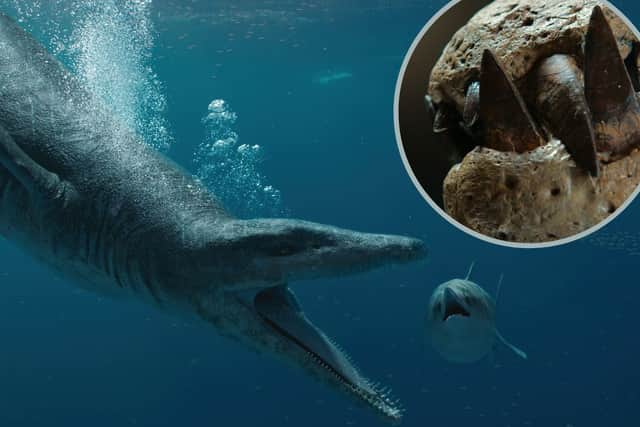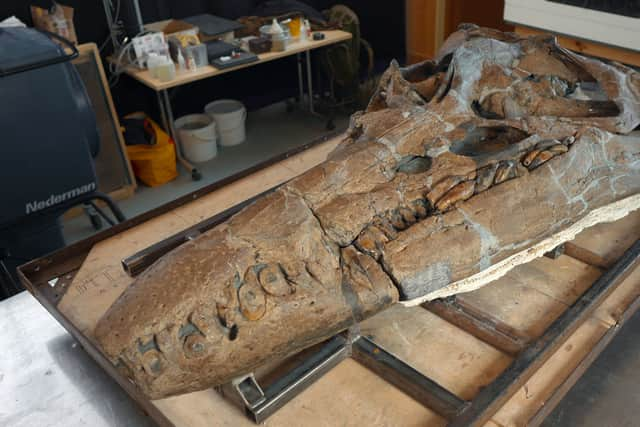Pliosaur skull discovery: sea monster fossil found in Dorset to feature on David Attenborough documentary
and live on Freeview channel 276
A Pliosaur ‘sea monster’ skull discovered at the Jurassic Coast in Dorset this month will feature in an upcoming David Attenborough documentary, Attenborough and the Giant Sea Monster.
The find, which happened this month, could shed new understanding on the creatures that ruled the oceans 150 million years ago, and may even represent an entirely new creature to science.
Advertisement
Hide AdAdvertisement
Hide AdAttenborough will speak to fossil hunters, palaeontologists, and scientists, as he learns about this huge fossil, the remains of an apex predator that would have hunted in the sea just off the coast of Britain.


What is a Pliosaur?
Pliosauroidea were a class of marine reptiles that existed from the Jurassic period to the extinction event at the end of the Cretaceous period which also wiped out the dinosaurs. Pliosauroidea have long necks and bodies, and relatively short heads.
Several large Pliosaur fossils have been found in the 21st century - they have been discovered in Mexico, Norway, and the UK. Pliosauroidea are distinct from dinosaurs, which lived on the land.
What is the Pliosaur fossil?
The Pliosaur fossil discovery is a 2m long skull and one of the most complete skull fossils of its type ever discovered. The fossil was discovered in several parts but together makes a complete skull with every bone accounted for.


Advertisement
Hide AdAdvertisement
Hide AdThe skull has 130 teeth, some larger than a human hand, with ridges at the back to make it easier for the creature to remove its teeth and go in for a second attack. The Pliosaur would have had a bite force of around 33,000 newtons, more than eight times that of a lion.
Speaking of the Pliosaur, Dr Andre Rowe, from Bristol University, told BBC News: “The animal would have been so massive that I think it would have been able to prey effectively on anything that was unfortunate enough to be in its space I have no doubt that this was sort of like an underwater T. rex."
What is Attenborough and the Giant Sea Monster about?
The documentary special will follow veteran broadcaster and biologist David Attenborough, 97, as he follows the team of fossil hunters as they excavate the Pliosaur skull from 12 metres up the cliff face on the Jurassic Coast.
Scientists and palaeontologists attempt to discover how the prehistoric creature looked and behaved, and the Pliosaur is brought to life using visual effects based on the theories of fossil experts.
When is Attenborough and the Giant Sea Monster on TV?
Attenborough and the Giant Sea Monster will air on BBC One and BBC iPlayer on New Year’s Day at 8pm.
Comment Guidelines
National World encourages reader discussion on our stories. User feedback, insights and back-and-forth exchanges add a rich layer of context to reporting. Please review our Community Guidelines before commenting.
